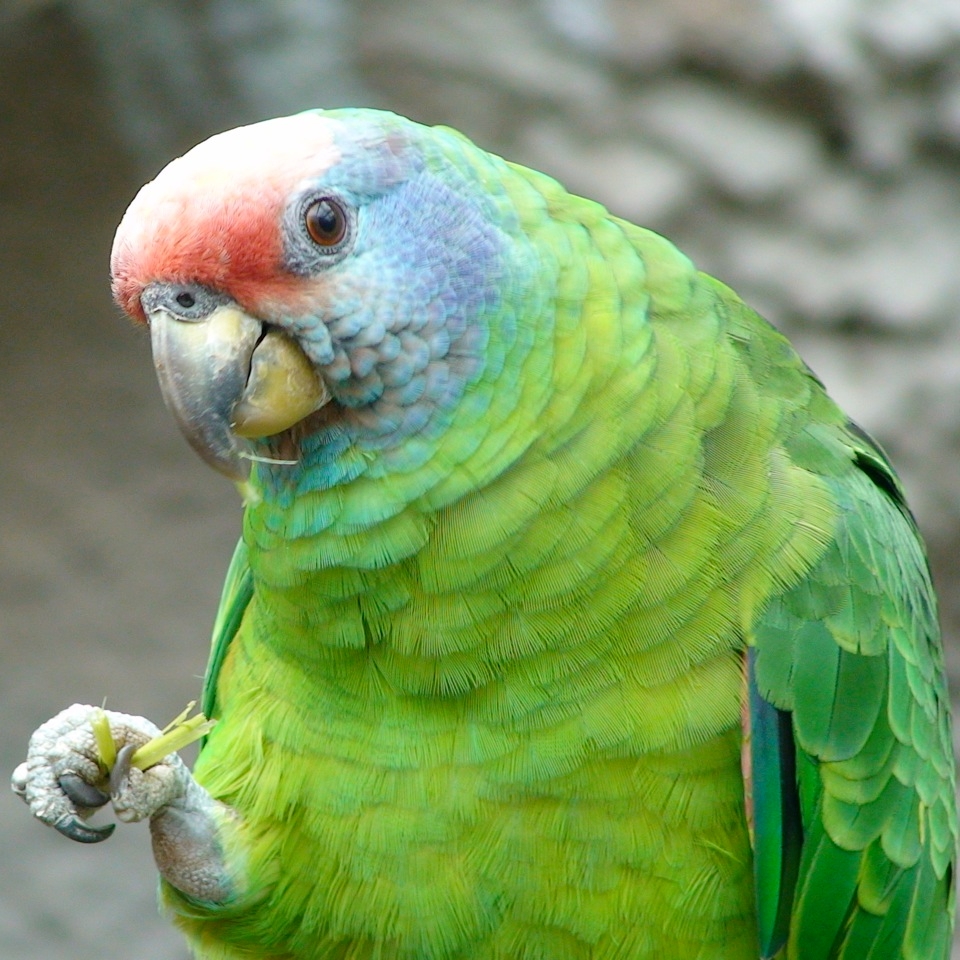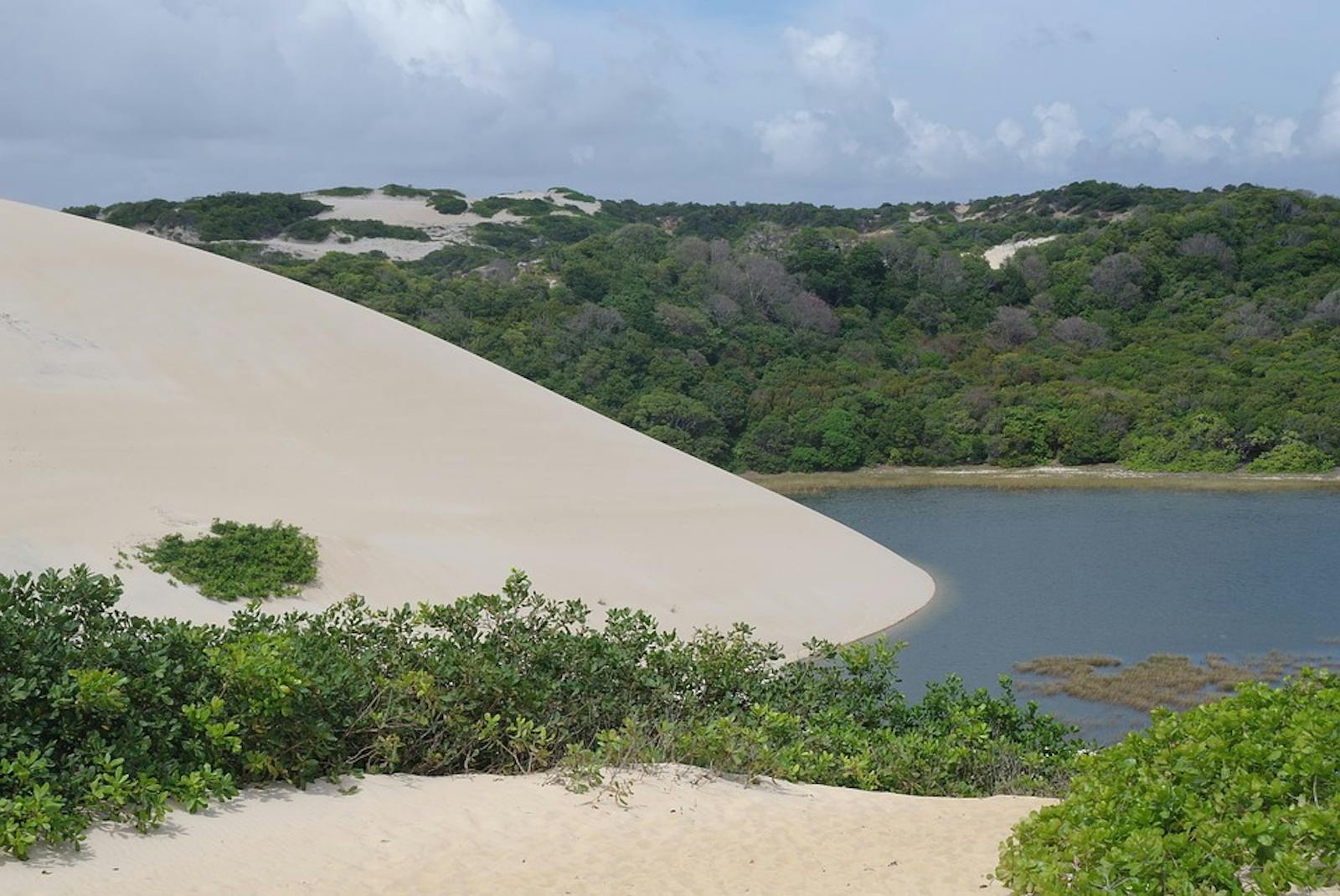Atlantic Coast Restingas
The ecoregion’s land area is provided in units of 1,000 hectares. The conservation target is the Global Safety Net (GSN1) area for the given ecoregion. The protection level indicates the percentage of the GSN goal that is currently protected on a scale of 0-10. N/A means data is not available at this time.
Bioregion: Brazilian Atlantic Moist Forests (NT14)
Realm: Southern America
Ecoregion Size (1000 ha):
789
Ecoregion ID:
441
Conservation Target:
21%
Protection Level:
7
States: Brazil, Uruguay
The Atlantic Coast Restingas are unique coastal sand forests in the eastern coast of Brazil and northern Uruguay that often grows on ancient dune formations. The sand soil is very porous and does not hold water well, which resulted in native species that are adapted to the dry environments. During the rainy season however, plenty of water pools are formed to provide habitat for the numerous species endemic to this unique ecoregion, including the Santa Cruz dwarf frog that lays its eggs in a foam nest on the surface of puddles and small pools. The entire range of the Santa Cruz draft frog is restricted in a small pocket near Rio de Janeiro in this ecoregion.
The vegetation types of restingas in Brazil vary from the small, herbaceous variety to large forests that can reach up to 20 m in height. In southern regions, restingas are affected by longer flooding periods that are influential in creating an assortment of submerged and terrestrial vegetation in response to fluctuating water levels. Unfortunately, urban expansion continues to be the major threat to the last remnants of the Atlantic Coast Restinga ecoregion.

The flagship species of the Atlantic Coast Restingas ecoregion is the red-tailed Amazon. Image credit: Creative Commons
Atlantic Coast Restingas consist of three well-defined areas of restinga forests distributed from northeastern to southeastern Brazil. Along this latitudinal gradient the climate changes from tropical to subtropical. Restingas are on sandy nutrient poor soils that are frequently associated with low-elevation plains, characterized by the presence of beach ridges and lagoon systems. Restinga forests vary from shrub vegetation to tall forests, which are distributed over many soil types and varying slopes from the coastal zones to the inland.
The main type of vegetation is a 5–15 m tall Atlantic forest rich in shrubs and tree species of the myrtle, legume, spurge, and Malphigiaceae families. A variation of mangroves, grasslands and swamps are all found bordering estuarine areas and beaches. A combination of geologic, soil, and floristic features sets this ecoregion apart from other portions of the Brazilian Atlantic forest.
A rich variety of vascular plant species and the occurrence of species endemism characterizes this region. In the Restingas of Rio de Janeiro harbors there are at least 643 vascular plant species. The plants Bumelia capitata and Jacquinia brasiliensis, Bruno’s Casque-headed Frog, the pectoral antwren, and the Neotropical otter all make this ecoregion their home. Other species of interest include pectoral antwren, red-tailed Amazon, restinga antwren, and crab-eating fox.
Atlantic Coast Restingas have been reduced by more than 90%. Despite such heavy losses in the past, habitat loss due to urban development persists. Protected areas consist of two national parks and one ecological station, including Jurubatiba Sandbank National Park.
Restinga forests are surrounded by or very close to large cities in which tourism is the major economic activity. For all these cities, urban expansion is the major factor threatening the last remnants of Atlantic Coast Restingas. The priority conservation actions for the next decade are to: 1) create more protected areas to ensure representation of endemic species; 2) establish environmental education programs in schools to promote the importance of habitat conservation; and 3) incorporate urban planning and tourism regulation in the conservation strategies of this ecoregion.
Citations
1. do Silva, Jose Marie C. 2018. Eastern South America: Eastern Brazil. https://www.worldwildlife.org/ecoregions/nt0102. 1 July 2018.
2. Filho, L.E.M., Somner, G.V. & Peixoto, A.L. 1992. Centuria Plantarum Brasilienum Exstintionis Miniata. Sociedade Botânica do Brasil, Rio de Janeiro.
3. MACIEL, N.C. 1984. A fauna da restinga do Estado do Rio de Janeiro: Passado, presente e futuro. Proposta de preservação. In: Lacerda, L.D., Araujo, D.S.D., Cerqueira, R. & Turcq, B. (org.). Restingas: origem, estrutura, processos. Universidade Federal Fluminense, Rio de Janeiro. pp. 269-274.
4. Luciana Barreto Nascimento, Sergio Potsch de Carvalho-e-Silva 2004. Physalaemus soaresi. The IUCN Red List of Threatened Species 2004: e.T57278A11597601. Accessed June 27, 2019.




